Rut Blees Luxemburg
Rut Blees Luxemburg, born in 1967, is a German-born British photographer. Her technique is to take photographs at night, mostly exploring the urban landscape. She is a Tutor at the Royal College of Art. In 2020, Luxemburg was awarded an Honorary Fellowship of the Royal Photographic Society, Bristol. The most comprehensive monograph on her work, Commonsensual, was published by Black Dog in 2009 and includes a critical essay by Regis Durand.

“The camera allows what you called a transformation. Something other than what you see during your mundane, everyday experience of the city to emerge. Something which is there, but can be sensed better than it can be seen. A camera allows this to be unveiled or show.”
This quote implies that photography is a better way to view the world, with the camera being referred to as providing a different point of view for people, making life a lot more interesting and showing individuals how much more exciting photography can make our world appear. This quote stands out to me as quite inspirational as it means that the whole concept of photography and image making is one that can alter someone’s perception of the world, making them more optimistic about the life they live.
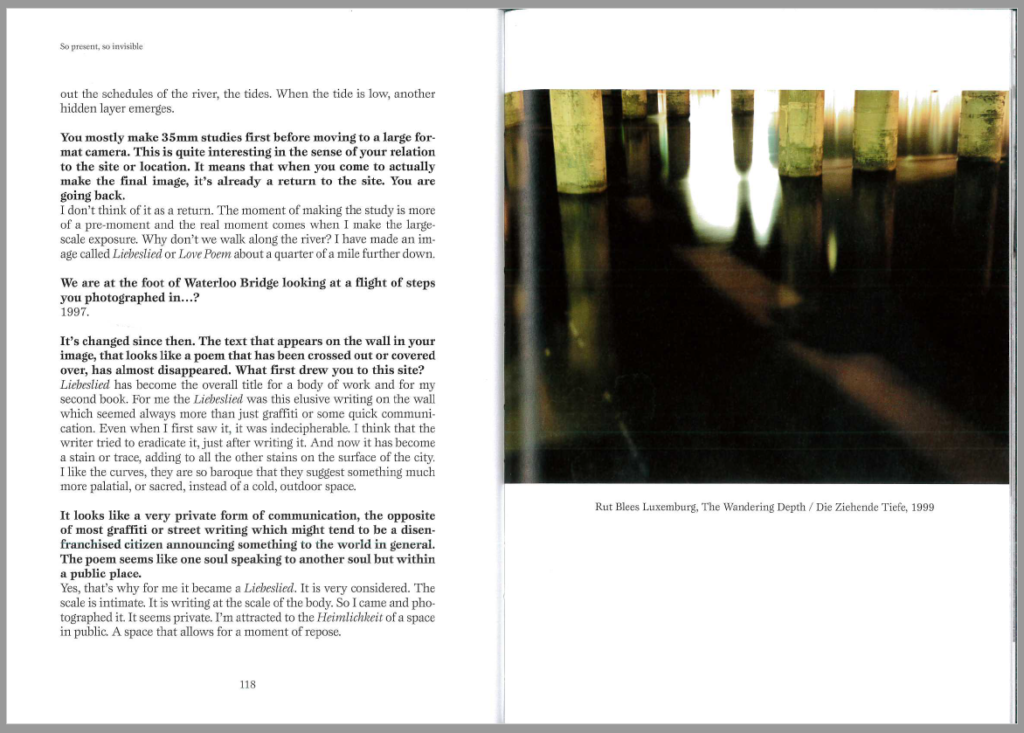
“The poem seems like one soul speaking to another but within a public place… It is writing of the body. So I came and photographed it. It seems private. I’m attracted to the Heimlichkeit of a space in public. A space that allows for a moment a repose.
This illustrates that the interviewer has very much read between the lines of the meaning of the book and the point of the view in within it has been written it. The interviewer’s opinions regarding how the book has been constructed is then supported when Rut Blees Luxemburg states “I’m attracted to the Heimlichkeit” which translates to ‘secrecy’ in Germany. This provides evidence that Luxemburg likes to explore how private matters can appear so public, and alternatively the opposite too. With public matters seeming so hidden at time of need.
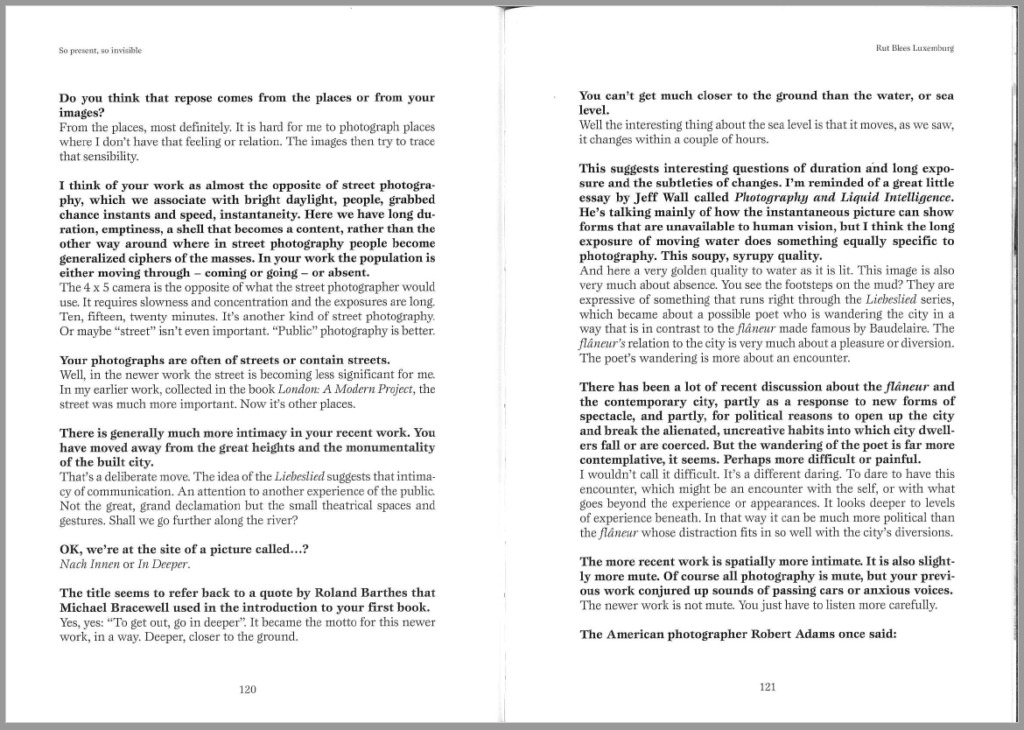
“The idea of Liebeslied suggests that intimacy of communication. An attention to another experience of the public. Not the great, grand declamation but the small theatrical spaces and gestures.”
In this section, its being suggested that communication is something which is subjective and something very person to individuals. I think that this is very important to note as the photographer has really considered how their images will impact other as the theme of intimacy is one which could be considered one that is challenging to photograph.
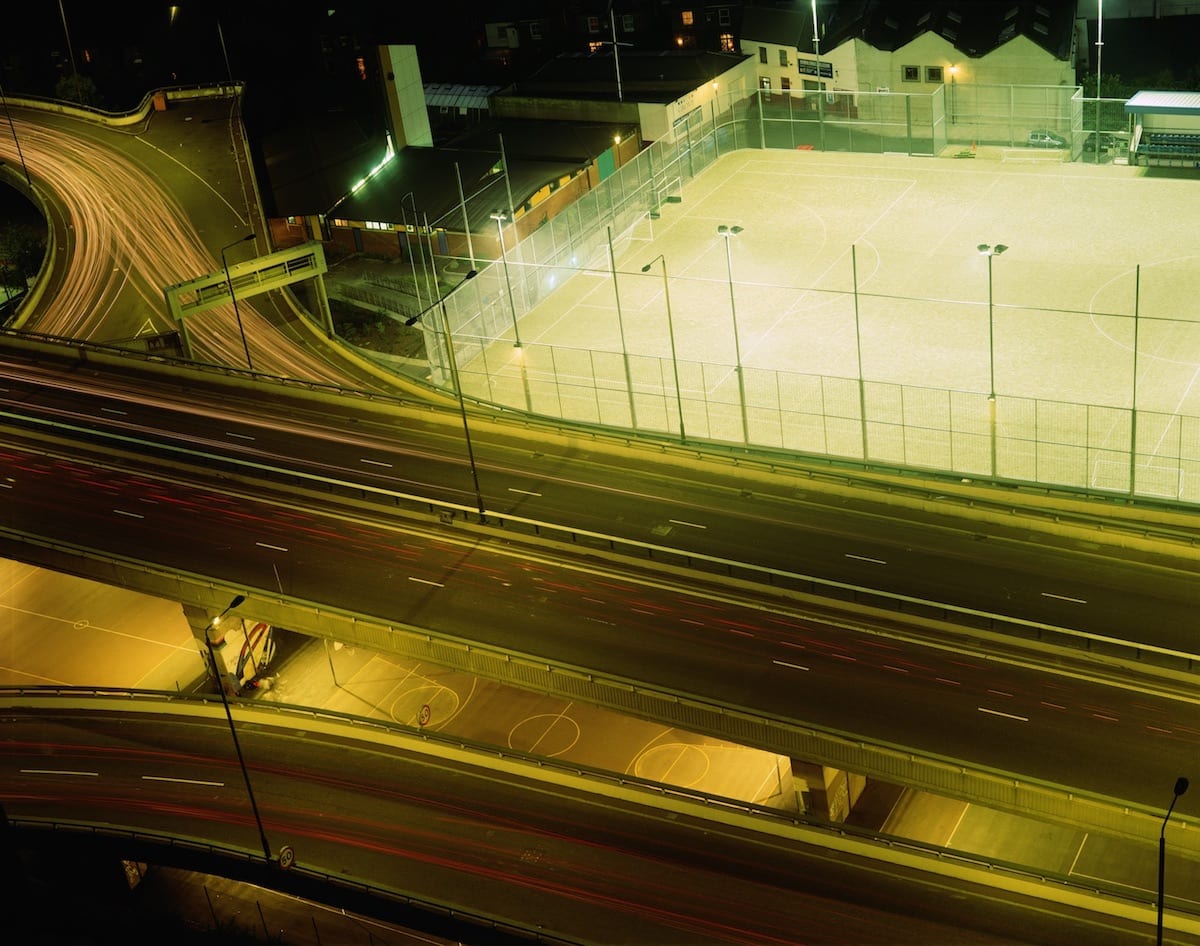
“To dare to have this encounter, which might be an encounter with the self, or with what goes beyond the experience or appearances. It looks deeper to levels of experience beneath.”
This is a complicated quote which is filled with highly sophisticated speech throughout this part of the interview. However, this explains that learning about your full truth through photography is not just withing the images you create, it can be about how you take your images, your moral standpoint when it comes to creating images, or even the ideas and concepts that you have when creating images. Image making can also be a reflection of your life experiences and how you have challenged and went through them.

“Water at night is a very powerful image… It suggests an immersion. In my past work I was very interested in vertiginous sensations. In this one I am much more interested in the sensation of immersion. Of course the river reflects, so it has this curios relation to photography.”
This provides evidence that the water is a vital party of Luxemburg’s work, and it has a lot of emotional towards in as it is a moving aspect of the images, that can tell natural and unnatural stories. Additionally, the photographer is invested in the senses that can be created and implied through photography, as images can convey and create image even though they are just visual.
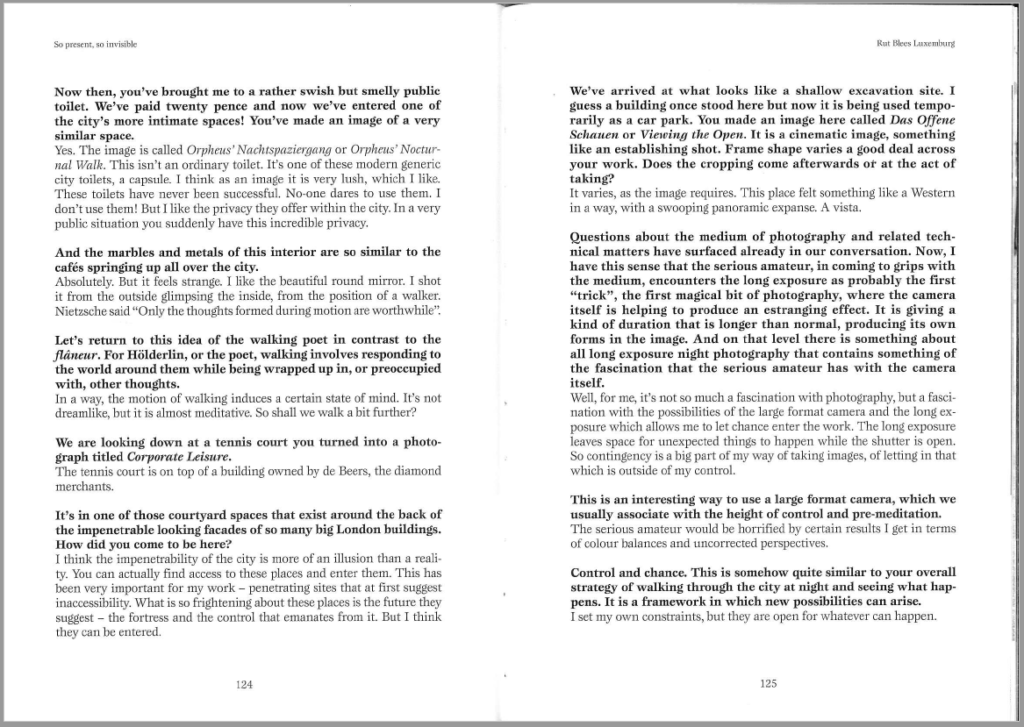
“It’s not so much so much a fascination with photography, but a fascination with the possibilities of the large format camera and the long exposure which allows me to let chance enter the work. The long exposure leaves space for unexpected things while the shutter is open. So contingency is a big part of my way of taking images, of letting in that which is outside of my control.”
The use of the camera and its settings is very important as it can make images look very aesthetic or destroy the quality and potential of work. Especially considering that some books that Rut Blees Luxemburg all only filled with low light and high-resolution images, it means that this is specifically very important to her, this is another vital aspect component throughout her work.
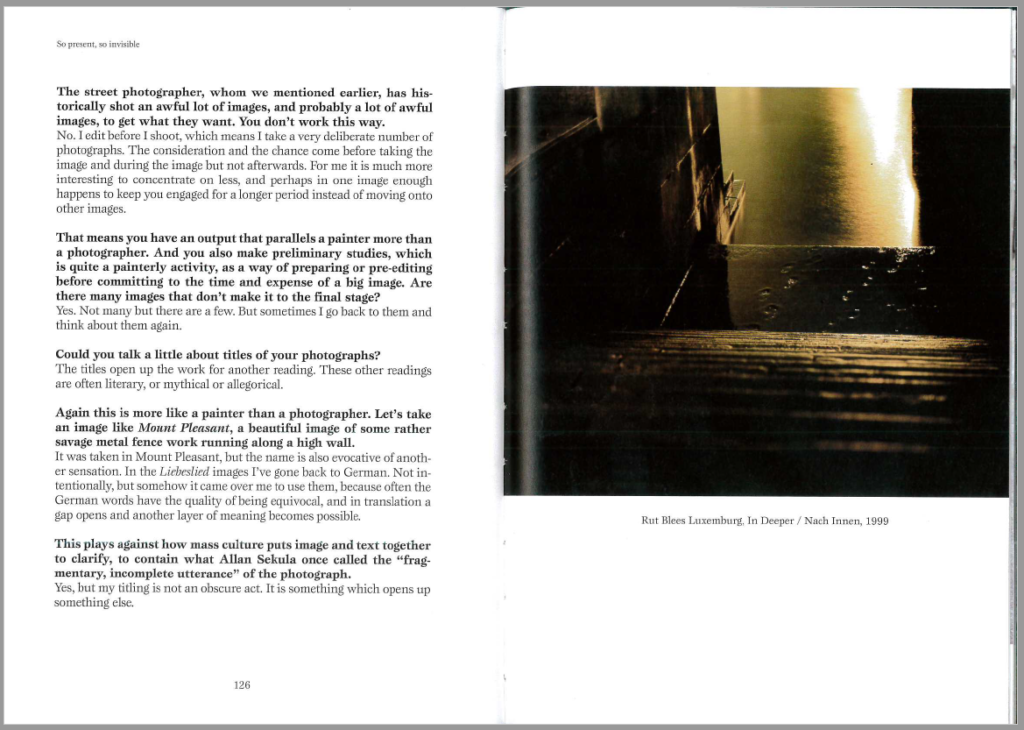
“I edit before I shoot, which means I take a very deliberate number of photographs. The consideration and the chance come before taking the photographs. The consideration and the chance come before taking the image and during the image and not afterwards.”
Luxemburg really considers how the process she goes through before going out on photoshoots and this is very important, and it means that she thinks about the good and bad consequences of throughout planning her photographs. This could mean that her work lacks some abstract pieces, but Luxemburg may not value this kind of photography or aim to produce it.
Image Analysis

This is one of my favourite pieces of Rut Blees Luxemburg’s work, this is a very legible image that could stand out anywhere it was placed. The vibrancy of this image almost makes it look fake and very much edited. I think that this is important to note as the impact of human life on the environment is one that is very much edited and significant, as this could be shown through the editing of this image. I think what’s significant about this image as it links to Luxemburg’s Liebeslied project which is the idea of public and private intimacy. This links to this image as it is of a block of flats, and each window will probably contain and capture different people’s lives. Meaning that collectively this image contains a very private place, someone’s home, but in a very private and intimate way, as this is suggested through the lighting and composition of the image. The building being in the centre of the photograph could suggest that the concept of privacy was the main focus of the idea being this image.
